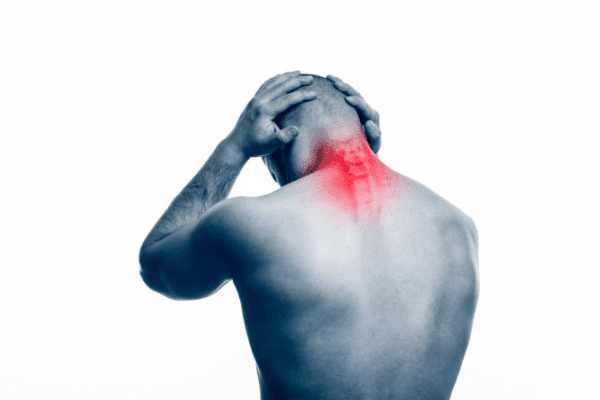Health for a lifetime >>>> Pain in the back of the head - causes
Pain in the back of the head - causes.

Pain in the back of the head is a very common occurrence, which is sometimes combined with pain in the cervical region. The pain can have a pulling character, pulsate to the temples and the frontal part of the head, but at the same time the feeling remains that the source of the pain is precisely the occipital part of the head. Pain in the back of the head can appear both when tilting the head or turning, or when stationary.
The most common causes of headache in the back of the head - tension of the muscular muscles of the cervical spine and shoulder girdle. The constant position of the head tilted while seated at the table causes excessive stretching of the muscles of the upper spine. Instead of alternating between tilting and straightening, a person stays in one position for a long time, the muscles freeze, some fibers contract, lose their ability to stretch for a while, and form "nodules", which causes unbearable pulling pains. With these causes of headaches in the back of the head, there is no nausea or urge to vomit. But with the contraction of the muscular apparatus, the vessels are pinched and dizziness, darkening in the eyes may develop. The way out can be found in the massage of the muscles of the shoulder girdle and cervical spine, in exercises with the head tilted back (not forward and not to the sides), lie on a flat surface without a pillow, which also bends the head forward, albeit not to a large extent. Exercise with stretching the neck helps a lot: in a standing position with your arms lowered and your shoulders straightened slightly backward, try to stretch the crown of your head up to the maximum possible height for you.
An equally common cause of headache in the occipital region is high blood pressure. In this case, a dull aching pain appears in the occiput region, which may be accompanied by dizziness, nausea, and deafness.
One of the most likely causes of occipital headache is migraine, or rather cervical migraine, in which the headache can affect not only the occiput, but also other areas of the head (in particular the frontal part). Such a headache is characterized by dizziness, fog before the eyes, loss of sensitivity in certain areas.
Occipital neuralgia may be the cause of pain in the back of the head and neck. Pain in neuralgia is of a paroxysmal nature (acute, piercing, tearing) and can radiate to the ear region, to the lower jaw, to the side of the shoulder girdle. In this case, the intensity of pain increases with any movement of the head, when the body bends, when coughing, laughing, sneezing.
Often, the causes of pain in the neck and back of the head are rooted in a disease called "spondylosis", in this case, cervical spondylosis, in which osteophytes (spine-like growths of bone tissue) appear. With cervical spondylosis, the headache can last for a long period, occur with any movement of the head, while it is very difficult for a person to find such a position of the head in which the headache would subside.
Another possible cause of headache in the back of the head and neck is myogelosis (compaction and hypertonicity of the muscles). The disease develops as a complication of myositis. At the same time, blood circulation in the muscle tissue is disturbed, inflammatory processes, and increased body temperature are possible. The muscles in the neck lose their elasticity and cause pulling pains in the upper spine, neck and back of the head.

Read

Read



























